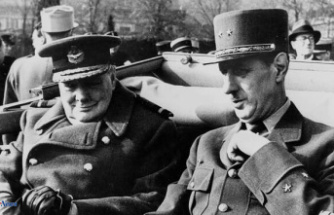the Savior of The Española giant tortoises is back in his homeland After he has preserved over the decades in the framework of a breeding programme for his species, almost single-handedly from extinction, was Diego dismissed now back on his home island in the Galapagos archipelago in the freedom. For the Galapagos national Park important Chapter is now complete, informed Ecuadorian Minister of the environment, Paulo Proaño on Monday.
The island of Española to receive Diego and 14 other giant tortoises from the breeding program "with open arms", the Minister added. About a hundred years old turtle had taken care of for 40 years, in the framework of the programme on the island of Santa Cruz diligently for the young. Originally Diego was to return in March, according to Española, but the appointment was delayed due to the Corona pandemic.
The about 80 kilograms in weight and up to 1.5 meters large animal is expected to contribute around 40 percent of the now on 2000 specimens grown under group Chelonoidis hoodensis conceived. 50 years ago, there were only two males and twelve females from Diego's class at Española.
Diego's history stands in stark contrast to the fate of the "Lonesome George" of Pinta island: The giant tortoise, died in 2012 at the age of more than a hundred years. "Lonesome George" the last known specimen of the sub-group of Chelonoidis abingdoni. The Galápagos Islands were among turtles, 15 species of giant, three of which are now extinct.
surrogate mothers for the white rhinoceros
The on the brink of extinction-standing Northern white rhinoceros, shall, meanwhile, with the help of artificial insemination and surrogate mothers saved. On this international project, the Serengeti-Park testicles Hagen is involved in the lüneburg Heath. "The Park has an exceptional position in the breeding of the Southern wide-mouth Rhino," said Thomas Hildebrandt from the Leibniz-Institute for Zoo - and wild animal research on Tuesday. With the help of the Nashornkuh Makena from lower Saxony, the Insertion and Discharge of the laboratory-produced embryos is to be tested. The first steps are to taken embryos of the southern Rhinos.
Worldwide, there are only two Northern white rhinos in Kenya, both of which are females. From two years ago, died last Northern Rhino bulls frozen semen but still exists. In the international project have already been generated from egg cells of the remaining females and sperm embryos –these should be held in Kenya from a surrogate mother. The target is that in three years, the first Northern white Rhino to be born, said Hildebrandt.
Date Of Update: 16 June 2020, 11:19











